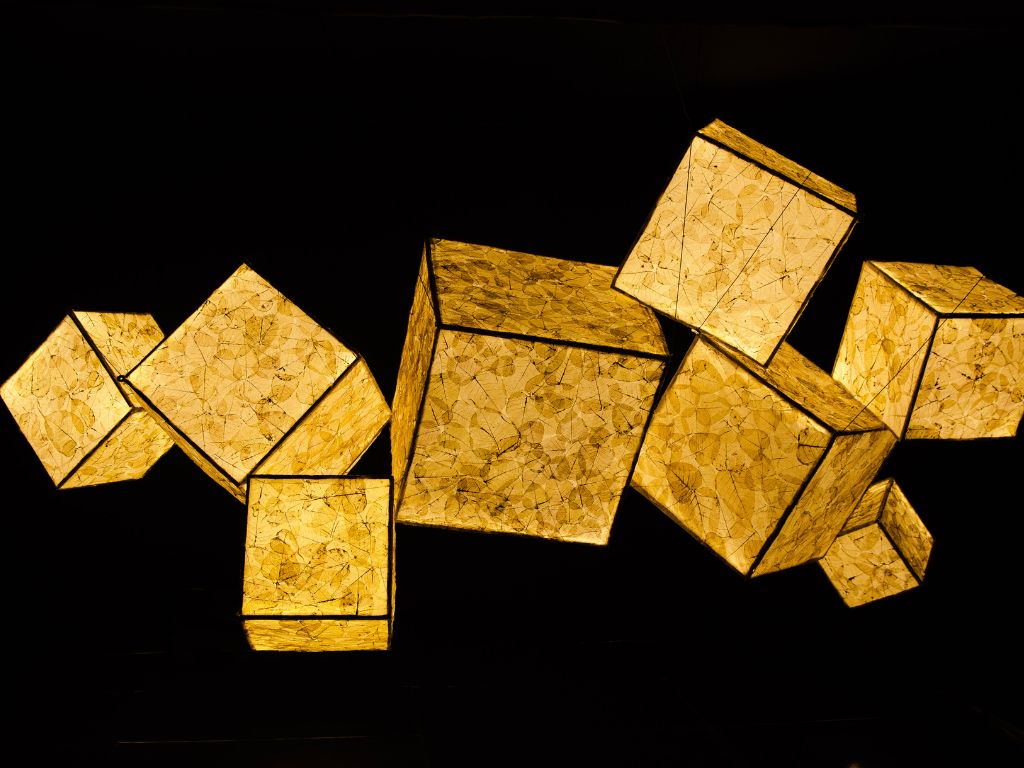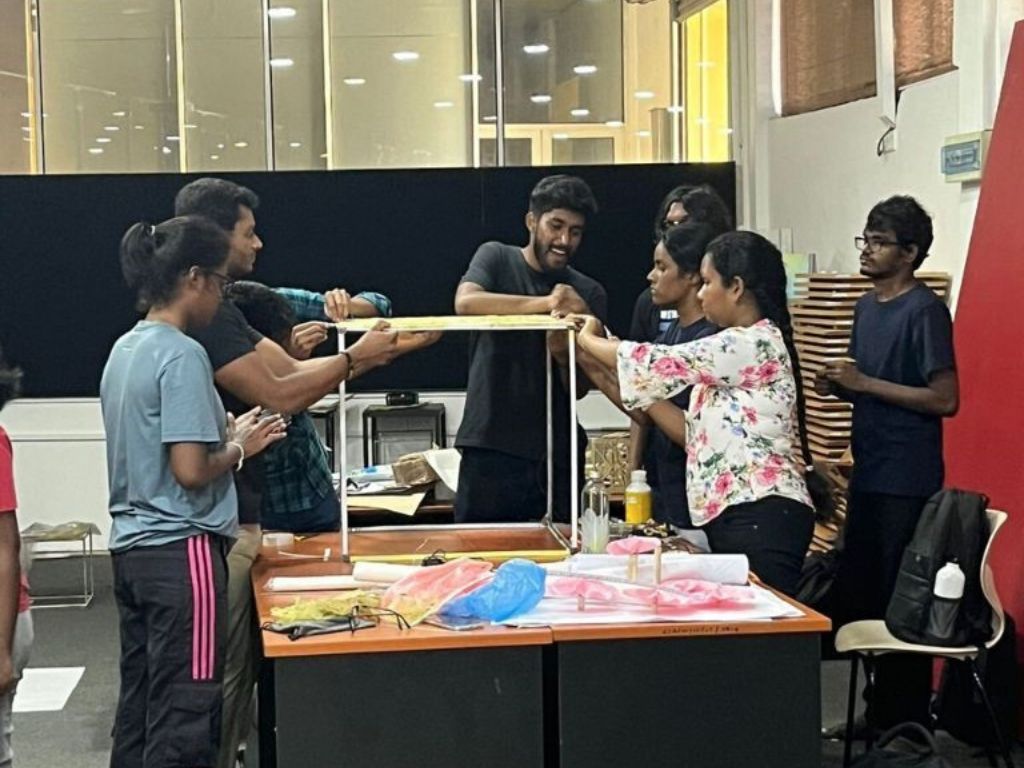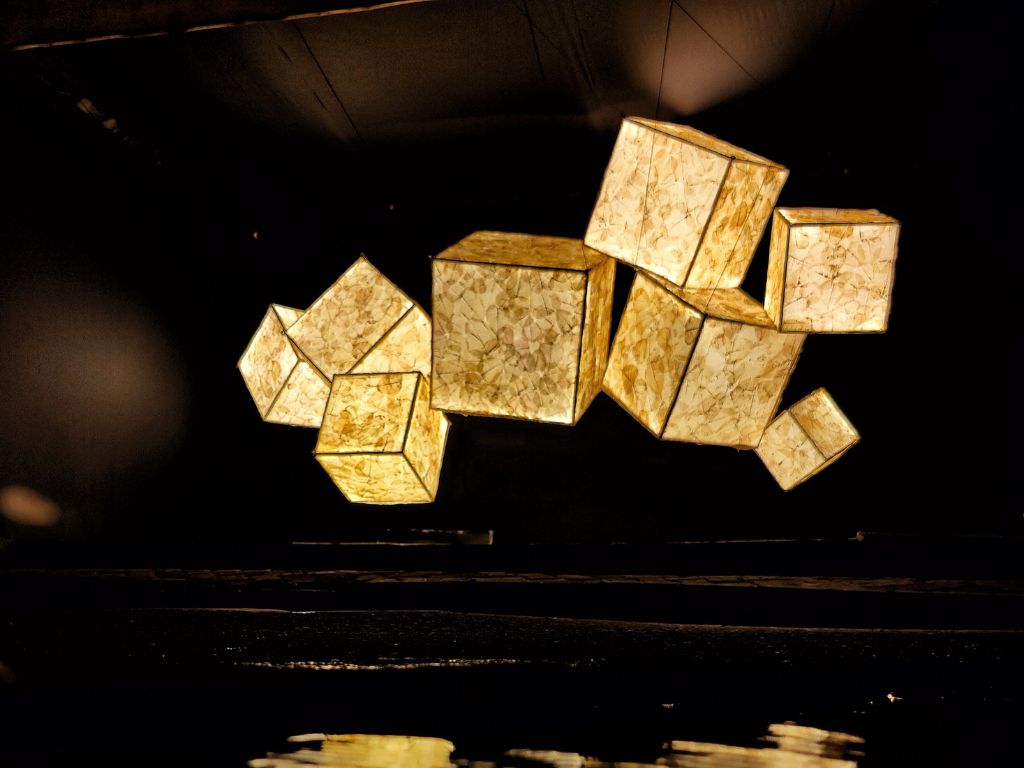As the full moon beckons in the sacred festival of Vesak, the streets of Sri Lanka become illuminated by lanterns, each of different shapes, sizes and colours created by people of various walks of life. Meanwhile, at the heart of Colombo amidst the cluster of the Bauddhaloka Vesak Kalapaya (located down the road it derives its name from), stands what appears from a distance to be a rather uncomplicated lantern of 8 white cubes set upon a black backdrop. Upon closer inspection however, there is more to this simple structure than what meets the eye.
Presented by the first year students of the City School of Architecture, the installation consists of 8 cubic structures held aloft by a set of thin cables. Each cube represents one of the Eight Worldly Concerns (Atalodahama), a set of worldly or mundane concerns that generally motivate the actions of ordinary beings which are said to be an obstacle to genuine spiritual practice. The varying sizes of the cubes represent the Eight Concerns affecting a living being in differing intensities as defined by their karma. Furthermore, the cubes are hung at different levels denoting the positive and negative consequences of karma every individual experiences universally.
The cables holding the cubes are used to depict the concept of Karma. While these cables may be near invisible, they are easily capable of bearing the weight of the eight cubes. Likewise, even Karma, though invisible to the naked eye, has a great impact on a living being.
Finally, as one ventures closer to the installation, a cladding of dried Bo leaves can be seen on the cubic structures. A sacred symbol of Buddhist philosophy, the Bo leaves are chosen as a material to represent the Buddhist concept of impermanence. By using the skeleton of the leaf, with the Bo leaf stripped bare in its final stages, it is shown that nothing is permanent and life itself is fleeting and temporary.
Initiated as a Design Project, the installation took two weeks and forty-three pairs of hands to build. From the welding and the wiring to the videography and music, each aspect of the installation has been carefully curated by the students themselves. Perhaps the most arduous part of creating the installation however, was creating the Bo leaf cladding for the cubic structures. The leaves are first mixed into a solution of sodium bicarbonate and bleach, and boiled until all the leaves have softened and then cooled in a pot of room temperature water. Thereafter, the pulp of each leaf has to be carefully brushed off before the leaf is once again rinsed and set aside to dry. Finally, the leaves are attached to a sheet of butter paper to create the final panel, which is then fixed to the welded cubic frames.
Ultimately, the installation serves as a reminder of the transient nature of life and the importance of mindful awareness amidst the distractions and concerns of the world. As the lanterns of Vesak illuminated the streets, the installation stands as a testament to the power of art in conveying profound philosophical ideas and fostering a deeper understanding of our shared human experience.











